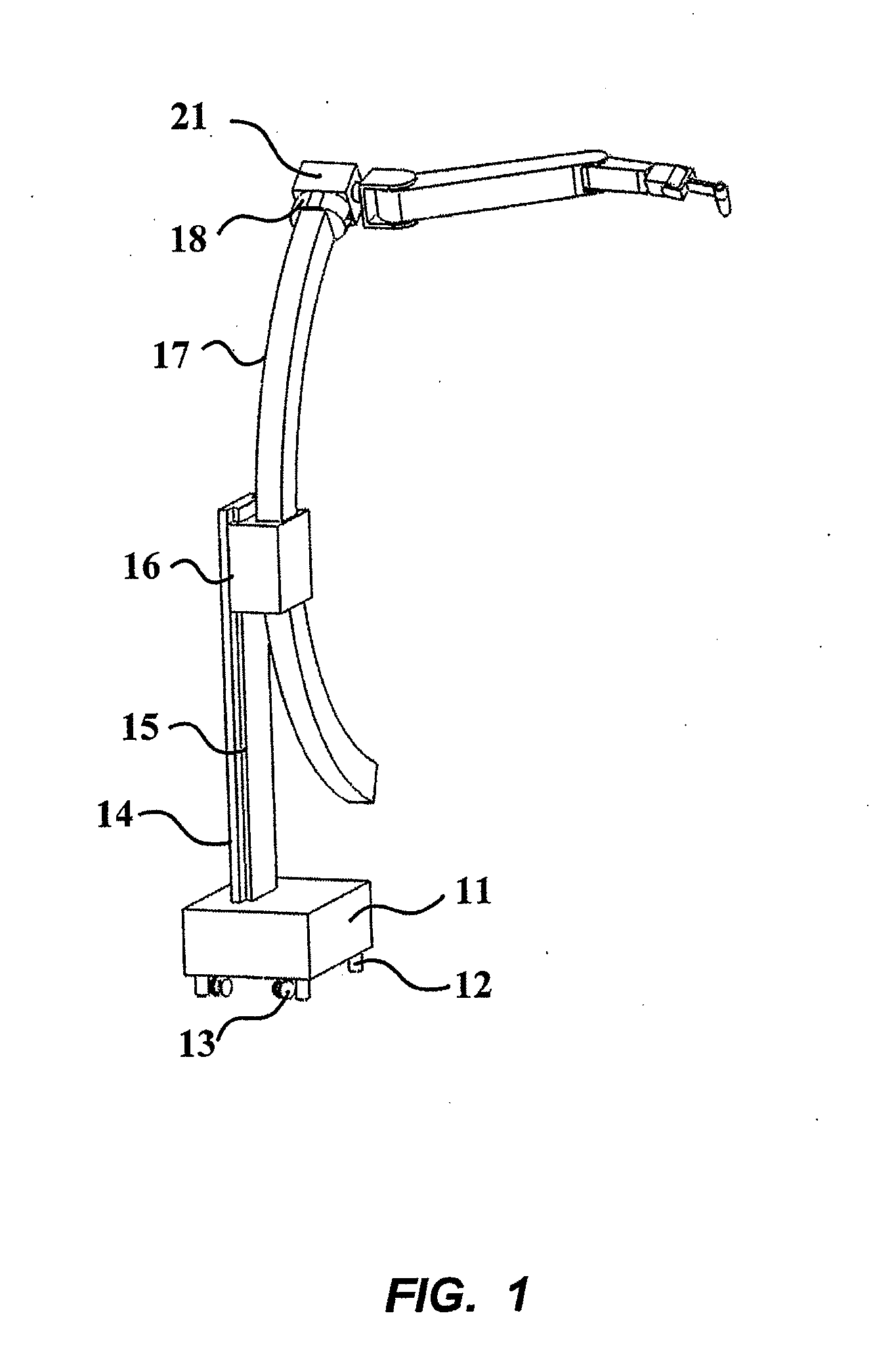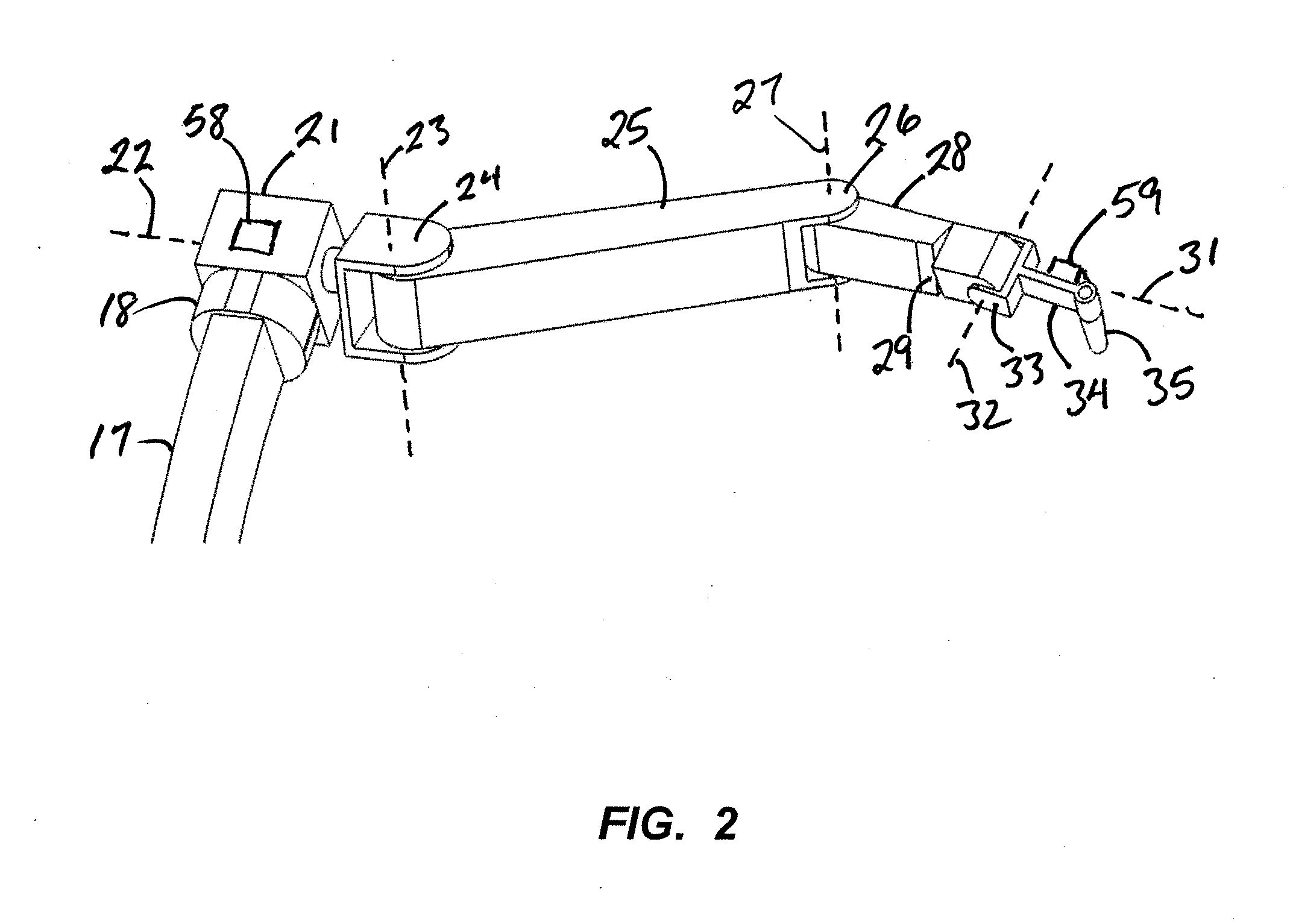Surgical robot with hybrid passive/active control
a robot and surgical technology, applied in the field of surgical robots, can solve the problems of allowing human intervention, unstructured environment in surgical operations, and inability to operate in a controlled manner, and achieve the effect of improving precision, utility, and safety
- Summary
- Abstract
- Description
- Claims
- Application Information
AI Technical Summary
Benefits of technology
Problems solved by technology
Method used
Image
Examples
Embodiment Construction
[0016]The term “prismatic joint” is used herein to denote a sliding joint that has only one degree of translation, typically in a linear direction, without allowing rotation of one part relative to another. The term “arc-shaped sliding joint” is used herein to denote a sliding joint in which the movement of one part follows an arc or a fixed curve, rather than a straight line. The typical arc-shaped sliding joint is one with a curved beam and a mating member that engages the beam such that the beam can slide within or along the mating member. The arc-shaped sliding joint is thus a form of prismatic joint since it does not allow rotation of the curved beam around an axis that is tangential to the curve of the beam. The term “revolute joint” is used herein to denote a joint with rotational motion around a single axis and no sliding motion. Each of the joints cited in this paragraph have but a single degree of freedom, although two or more joints together can provide multiple degrees o...
PUM
 Login to View More
Login to View More Abstract
Description
Claims
Application Information
 Login to View More
Login to View More - R&D
- Intellectual Property
- Life Sciences
- Materials
- Tech Scout
- Unparalleled Data Quality
- Higher Quality Content
- 60% Fewer Hallucinations
Browse by: Latest US Patents, China's latest patents, Technical Efficacy Thesaurus, Application Domain, Technology Topic, Popular Technical Reports.
© 2025 PatSnap. All rights reserved.Legal|Privacy policy|Modern Slavery Act Transparency Statement|Sitemap|About US| Contact US: help@patsnap.com



